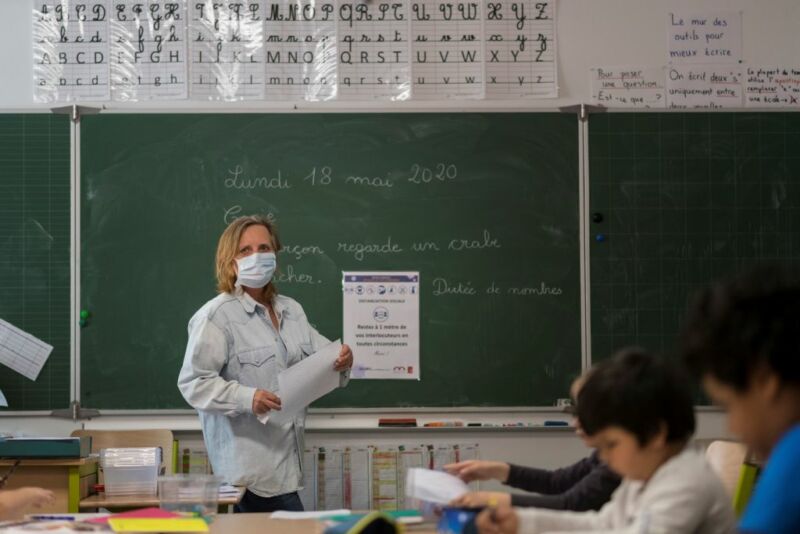
Enlarge / Classes have restarted in France following the lifting of restrictions. (credit: SEBASTIEN BOZON/Getty Images)
The various forms of social restrictions, from distancing to stay-at-home orders, seem like a radical departure to most of us. But faced with a pathogen that spreads through human interactions, they’re an obvious potential solution to limit that spread. And a variety of epidemiological models have indicated that various combinations of these approaches should be effective.
But do they actually work in the real, messy, interconnected modern world, and against this specific pathogen? It’s important to try to confirm that the models accurately project real world results, and epidemiologists are doing exactly that. So far, the results are good: across several countries and contexts, restrictions were associated with significant drops in the spread of SARS-CoV-2. The bad news is that more severe restrictions may be necessary to keep the number of infections from increasing.
Good news from France
France was one of a number of countries that went for a lockdown, with anyone found outside their home expected to have a permit explaining why they needed to travel. The country has only just started to ease these restrictions following a period in which the total number of infected individuals has fallen. An international team of researchers has now looked at the dynamics of SARS-CoV-2’s spread in the time before and after the lockdown was started on March 17th.
Read 11 remaining paragraphs | Comments
Source: Ars Technica – 3 different countries, 1 result: Stay-at-home orders work
